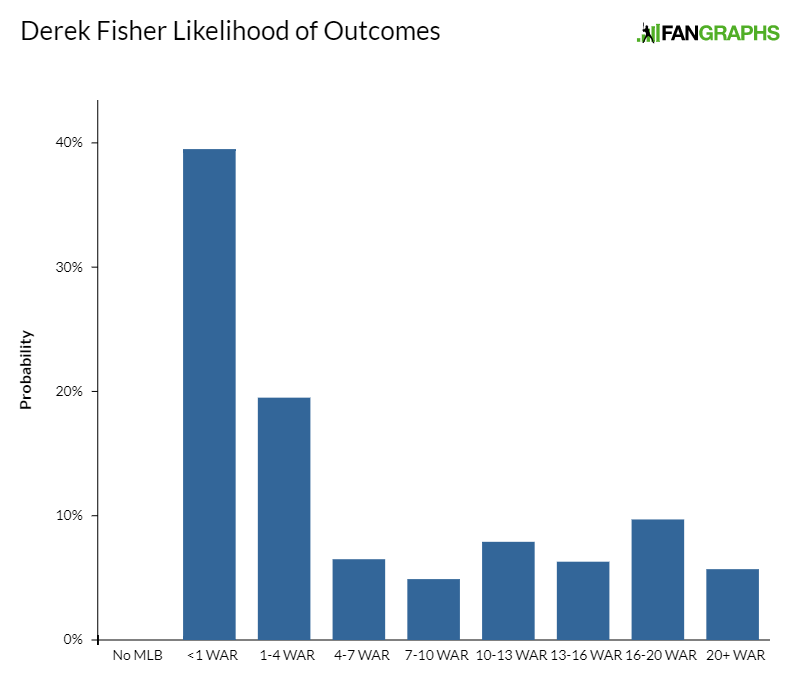With Josh Reddick sidelined by a concussion, the Astros summoned 23-year-old center fielder Derek Fisher to the big leagues yesterday. The early returns are good: in his debut, Fisher went 2-for-3 with a homer and two walks.
Fisher had more than earned this opportunity, slashing .335/.401/.608 at Triple-A this year. A power-speed threat, Fisher eclipsed 20 homers and 20 steals in both 2015 and 2016, and Eric Longenhagen gave him raw power and speed grades of 60 and 70, respectively. Fisher had a bit of a strikeout problem in the past, but has managed to slice his strikeout rate from 27% last year to 19% this year without sacrificing any of his power.
KATOH loves Fisher, which shouldn’t come as much of a surprise given his excellent performance this year. I have him projected for 8.1 WAR over his first six seasons by stats-only KATOH and 6.3 WAR by KATOH+, which incorporates Eric Longenhagen’s relatively modest 45 FV grade. Those projections make him the 18th- and 48th-best prospect in baseball, respectively.

To put some faces to Fisher’s statistical profile, let’s generate some statistical comps for the toolsy center fielder. I calculated a Mahalanobis distance between Fisher’s Double-A and Triple-A performance and every season since 1991. In the table below, you’ll find the 10 most similar seasons, ranked from most to least similar. The WAR totals refer to each player’s first six seasons in the major leagues. A lower “Mah Dist” reading indicates a closer comp.
Please note that the Mahalanobis analysis is separate from KATOH. KATOH relies on macro-level trends, rather than comps. The fates of a few statistically similar players shouldn’t be used to draw sweeping conclusions about a prospect’s future. For this reason, I recommend using a player’s KATOH forecast to assess his future potential. The comps give us some interesting names that sometimes feel spot-on, but they’re mostly just there for fun.
Derek Fisher Mahalanobis Comps
It’s not immediately clear how, or how often, Houston will work Fisher into their lineup once Reddick is healthy. But Houston would perhaps benefit from shifting some of Nori Aoki’s at-bats to Fisher, giving them an outfield of Fisher, Reddick and George Springer. Regardless, Fisher’s rare combination of power, speed, and contact ability makes his future look incredibly bright. And he made it clear with his 2017 performance that he has nothing left to prove in the minor leagues.


